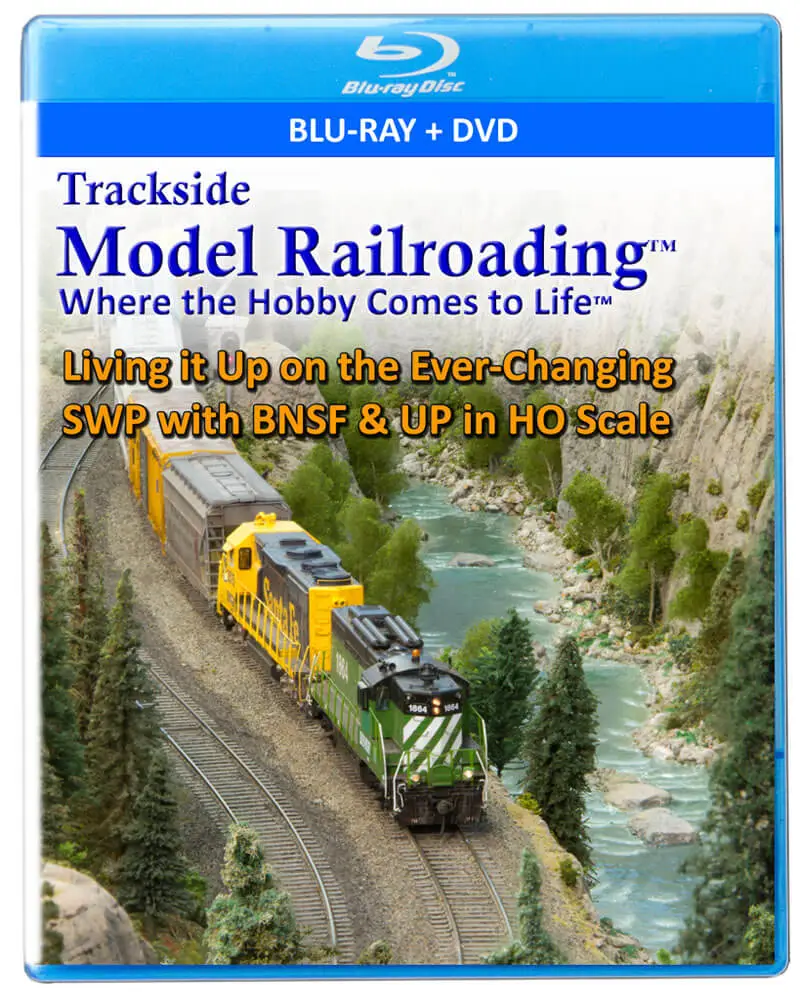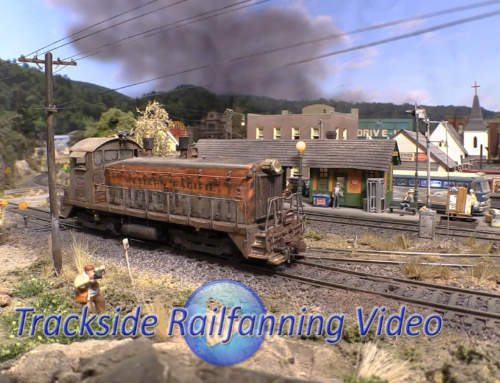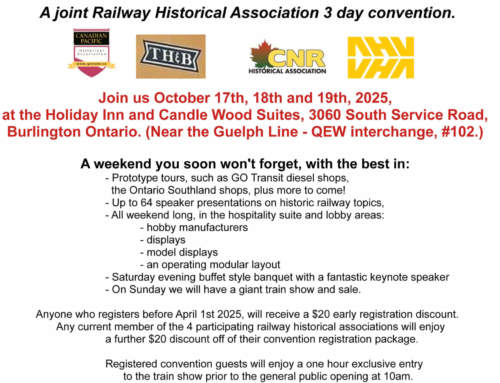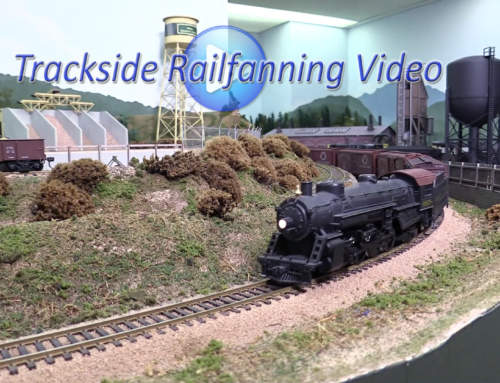AT&SF Across the American Southwest: Reliving 1992
Story by Jennifer Waters
Photos and videos by Ross and Jennifer Waters
Mike McGinley’s Southwestern Pacific (SWP) is a freelanced, beautifully modeled HO scale layout. He is currently modeling the Santa Fe as of 1992. Mike changes what railroads he runs, and we’ve featured the SWP previously when he was operating the Union Pacific and the BNSF. Mike used to run the layout between 1951 and 2006, shifting back and forth. He changed that plan to a more linear backward movement, progressing in five-year increments. He runs one main prototypical railroad at a time as the era changes. In this last time shift, he chose to go back just four years (to 1992 instead of 1991) in order to be able to include Metrolink trains, which first operated in Southern California that year.
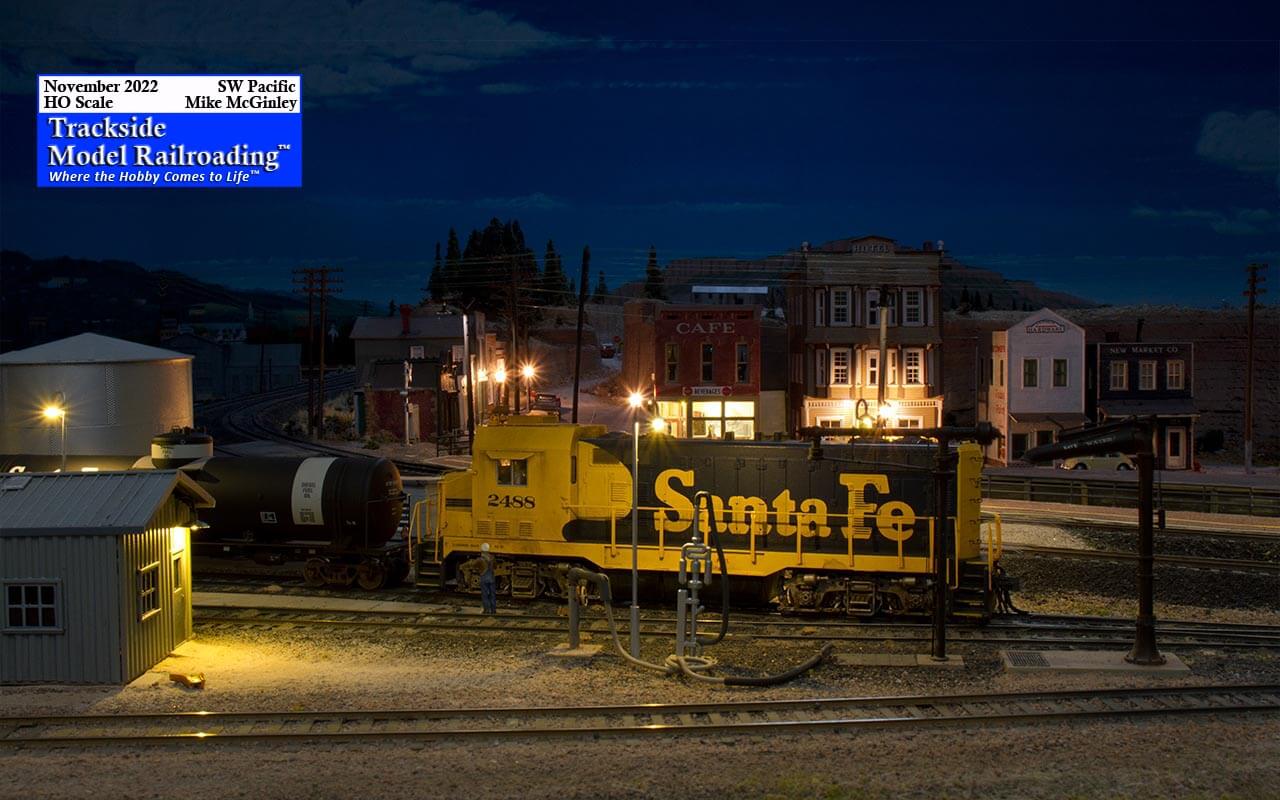
Image Caption: A crew delivers a tank car to the maintenance facility in Paseo. When Mike was running the Union Pacific on the layout, he had the office painted in their Armour Yellow. He now has a metal storage shed in place instead.
Metrolink, which is a commuter railroad in Los Angeles, is significant to Mike because he spent 14 years working for the railroad as a civil engineer. Prior to that, he spent 20 years with the Southern Pacific. He also worked for 12 years as an independent railroad consulting engineer. In his modeling, Mike has focused on the BNSF, Union Pacific, and Amtrak. As he is stepping back in time on the layout, he is also beginning to model the predecessors of those railroads. This allows him to enjoy modeling some of the same years that he worked for the railroad; his career spanned 1966-2006. As the era changes, Mike gets rid of motive power and rolling stock that no longer fits the time period and he removes and rebuilds structures to fit the new focus. This gives him constant new projects to focus on and keeps his interest. For the recent change-out to 1992, Mike built a Texaco gas station in his model of Paseo, New Mexico. He also built a freelanced station in Paseo that resembles the Santa Fe at Mountainair, New Mexico, and fits in with the American Southwest. That station includes lighting that Mike can enjoy when he wants to run at night. In the freelanced town of McDonald, which Mike named after his wife’s maiden name, he recently replaced the station that was there with a different structure.
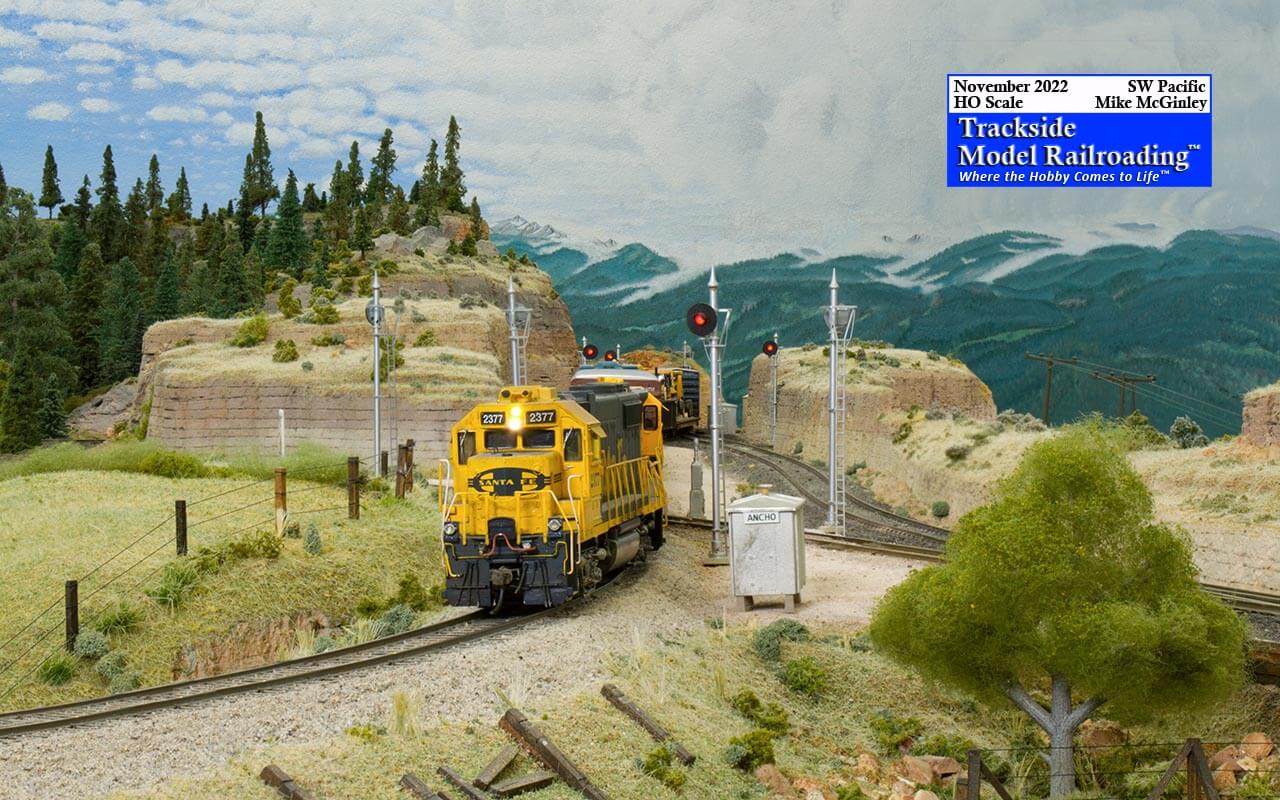
Image Caption: We catch a manifest at Ancho, which is the junction where the McDonald reverse loop meets the main line at the eastern end of the layout.
Mike runs trains on a 24-hour schedule, with a good mix of freight and passenger trains that fit the era. He uses car cards and waybills to track train movements. Initially, he built the layout to be controlled by DC. He decided to upgrade it to North Coast Engineering digital command control in 2015 (NCE DCC). On the original layout that he built in California, he had installed automatic block signals with detectors on each switch that automatically changed the signals to red as soon as a locomotive would pass by in order to mimic prototypical operations. He used the same signals after he moved. In 2015, when he upgraded layout control, he found that some of the old “Twin T” diode pair detectors did not work so he installed DCC transformer “tombstone” detectors instead.
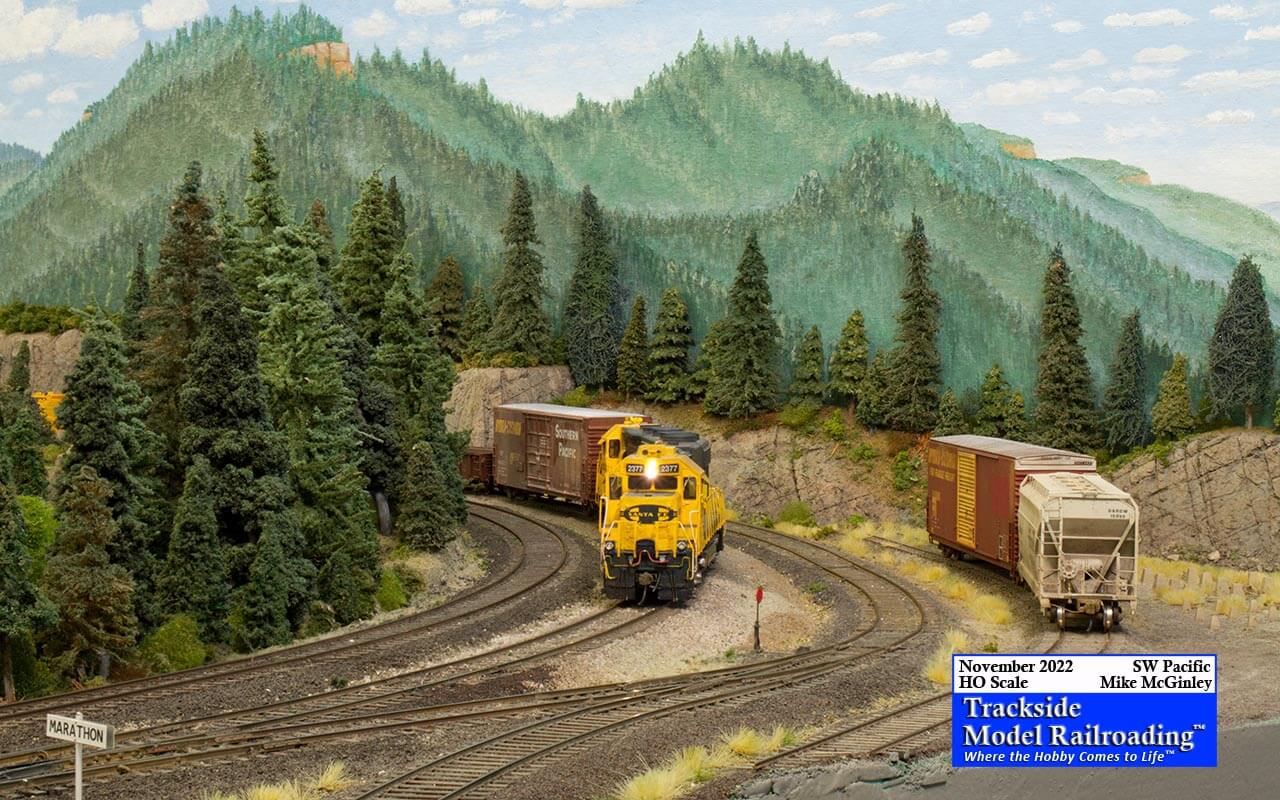
Image Caption: On Mike McGinley’s HO scale Southwestern Pacific Railroad, a train led by a GP38-2 arrives at Marathon. Mike made trees using a few different methods, including these conifers that he built using dowels, furnace filters, and ground foam.
The quality of the scenery and the height of it creates a realistic, immersive experience at the SWP. Mike’s main goal was to create a railfanning layout where he can enjoy his working years on the railroad, and the SWP quite successfully accomplishes that. There are many locations where trains can be enjoyed in gorgeous and varied landscapes, and since the layout is fully scenicked there’s hardly a bad angle from which to view the trains. The line runs around the outside of a large peninsula with McDonald in the center; a ridge of mountains separates the Cascade River Canyon from Marathon and the Hernandez River and the Carbon Junction lift-out bridge spans the gap over the aisle. The bridge can be left in place when Mike wants a photo at Carbon Junction or it can be removed for railfanning that requires a less dominant structure in the scene.
Video Caption: On Mike McGinley’s HO scale Southwestern Pacific Railroad, we interview Mike at his model railroad.
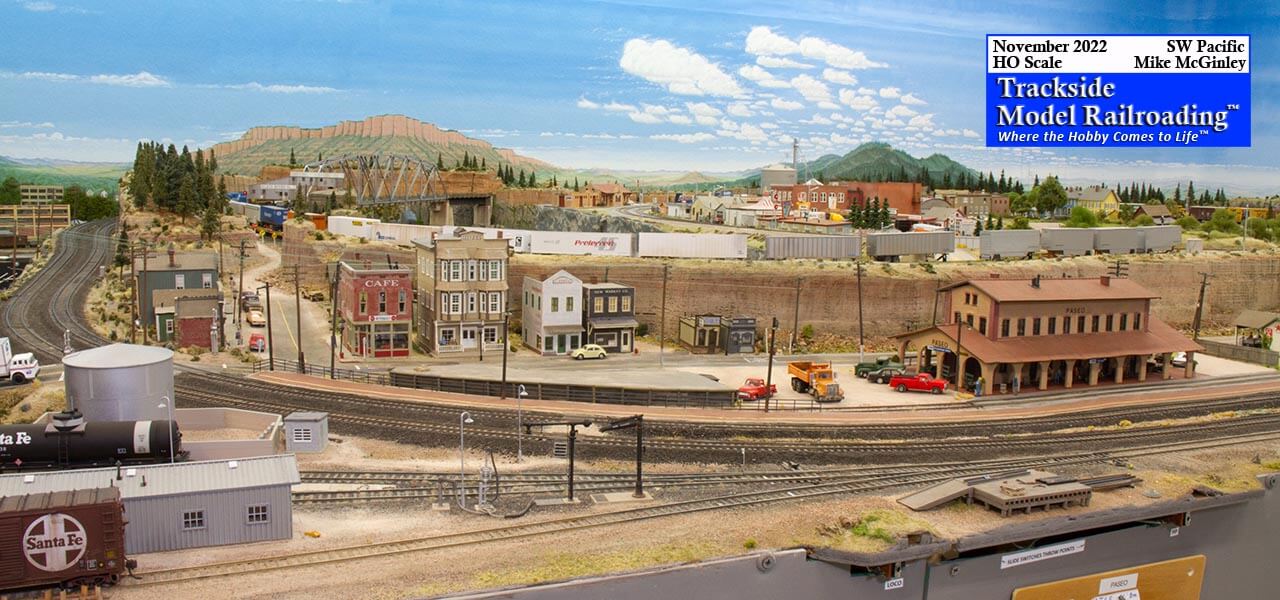
Image Caption: This layout view shows Paseo in the foreground. The town is freelanced and is based in New Mexico. McDonald is shown behind it.
Many of our readers have seen Mike’s Southwestern Pacific Railroad in operation with a few different railroads at work. During this trip to the SWP, we were able to enjoy mostly Santa Fe EMDs (including the Metrolink’s F59PH) and a few GEs. A few Burlington Northern trains also made an appearance. Mike also loves Amtrak and always includes the opportunity to railfan its passenger trains as is appropriate for the era. During 1992, that means its Phase III “Pepsi Cans” are still in operation. Be sure to watch the interview with Mike at the layout to learn a bit about his model and to see some trains at work across the American Southwest. We share much more about the scenery and operations of the layout in the November 2022 Premium Edition of Trackside Model Railroading digital magazine as well as many full-page photos of the SWP. -TMR
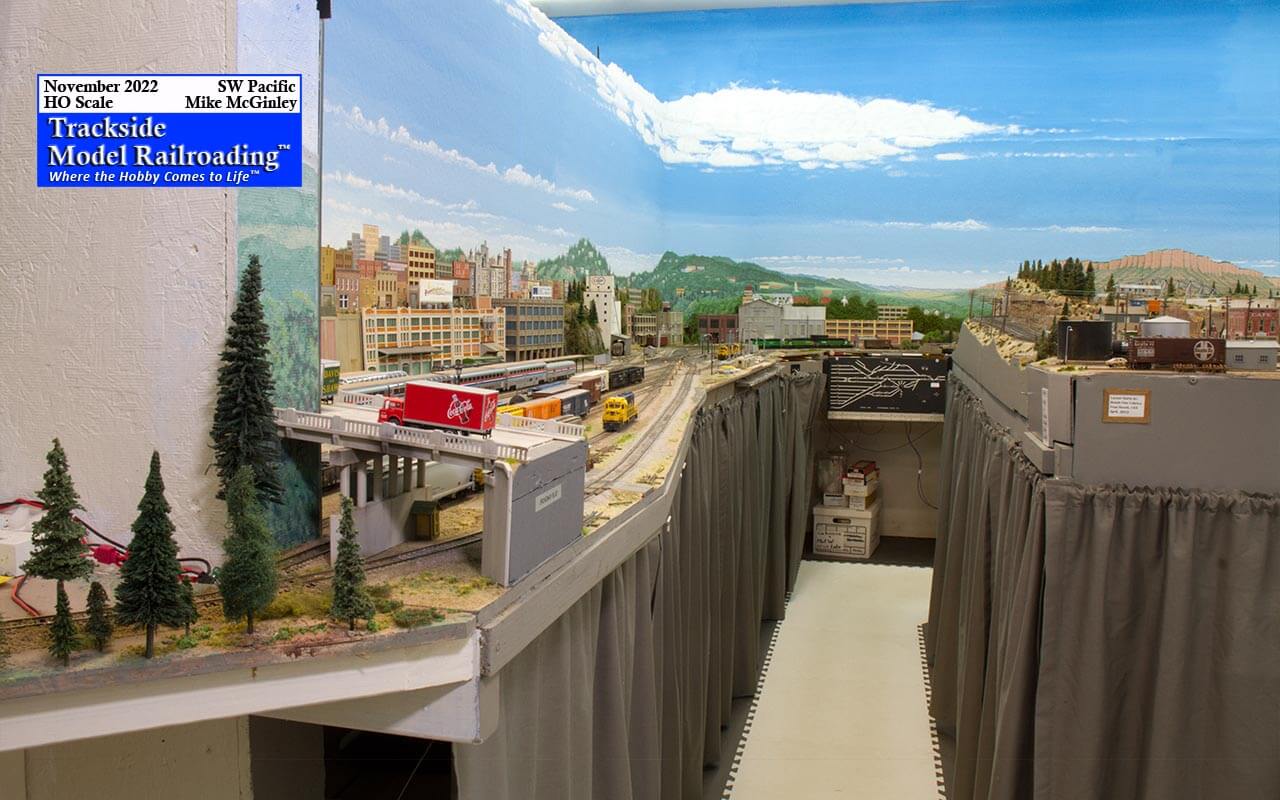
Image Caption: The Patrick Yard is shown at the left; an aisle separates it from the main peninsula in the center of the room. Recently, Mike built a small shelf with a track to connect the Patrick Yard with the Rathole (storage) Yard on the opposite side of the wall.
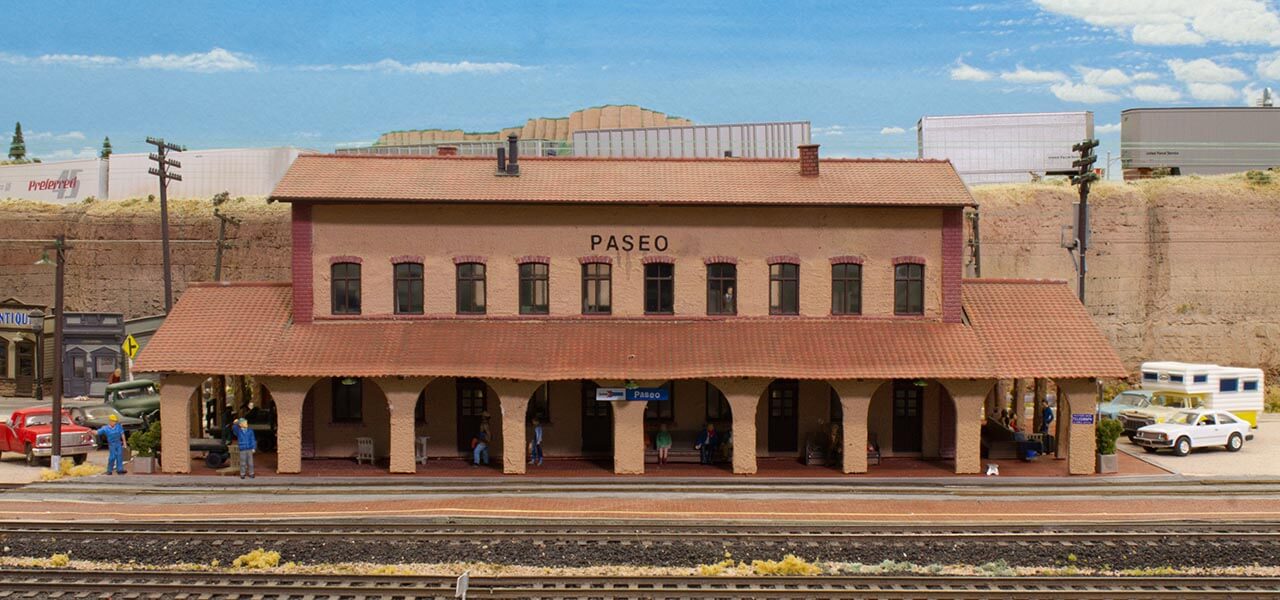
Image Caption: Mike’s Paseo Depot was inspired by the Santa Fe Mountainair Depot, which he visited in 1987. He liked the arched breezeway that it had at one end and chose to extend that around the whole structure. He made the building using styrene and stucco.

Image Caption: An Amtrak train with General Electric Dash 8-32BWH locomotives waits for passengers to board in St. Patrick. The lead locomotive, number 514, is painted in the Phase III “Pepsi Can” paint scheme. The prototype was built in 1973.
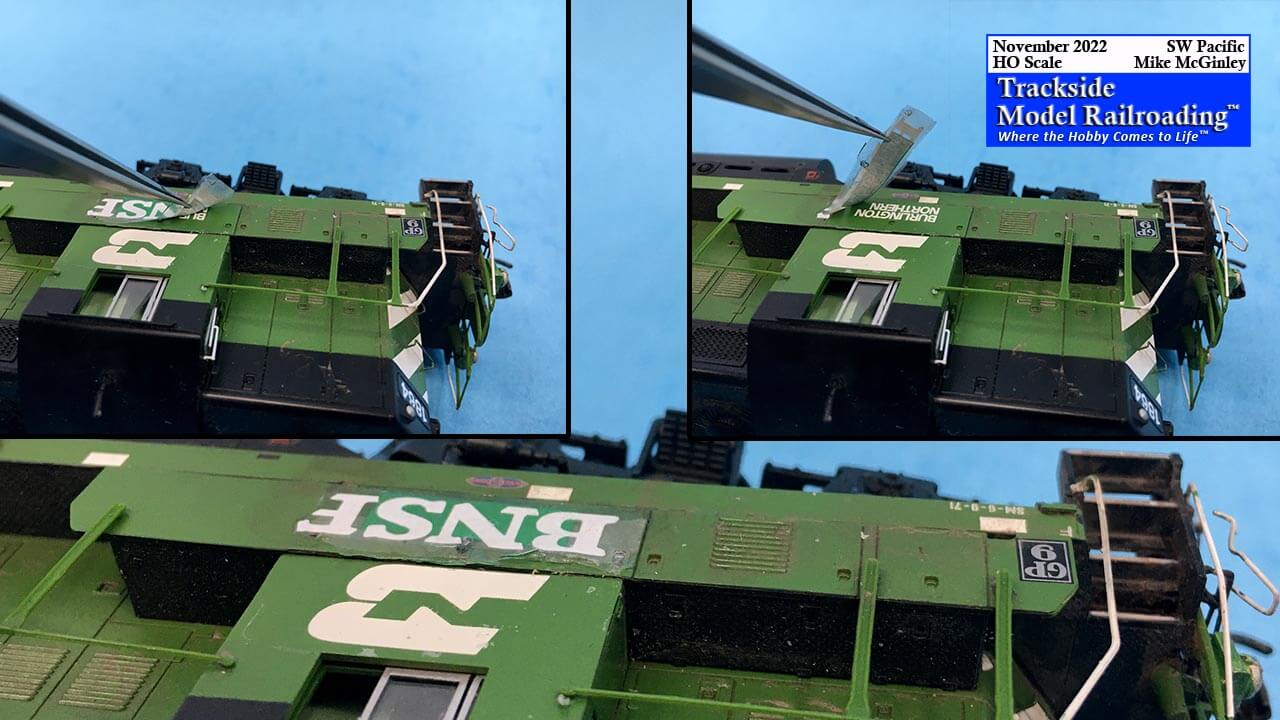
Image Caption: Since Mike is going back in time, he applies patches to locomotives that must later be removed. Here, he is removing the BNSF decals from a BN locomotive to restore it to its former state. Decal Photo by Mike McGinley
Stats:
Layout Owner: Mike McGinley
Layout Name: Southwestern Pacific Railroad
Prototype: freelanced, currently running the Santa Fe
Scale: HO (1:87)
Layout Size: 18x22 feet (5.49x6.71 meters)
Era: ever changing, currently 1992
Track Height: 46 to 54 inches (1.17 to 1.37 meters)
Main Line Length: 110 feet (1.81 miles)
Style: linear walkaround originating from Urban Intermodal Terminal on single main line
Benchwork: 30x60 inch modules for portability
Roadbed: 1/4” plywood, mixed cork, Homasote®, and wood ballast board
Track: Precision Scale super elevated Flex Code 83 on curves, mixed code 83 elsewhere
Turnouts: various, gradually converting to Peco
Minimum Radius: 36” on main line with Santa Fe prototype spirals
Ruling Grade: 2.2%
Backdrop: hand-painted on 4x8 foot Celotex panels and on the walls
Scenery: mostly carved polystyrene foam, some plaster rock and some foamboard
Control: NCE Digital Command Control with Integrated Signal Systems automatic block signals
Living it Up on the Ever-Changing Southwestern Pacific with BNSF & UP in HO on Bluray & DVD







